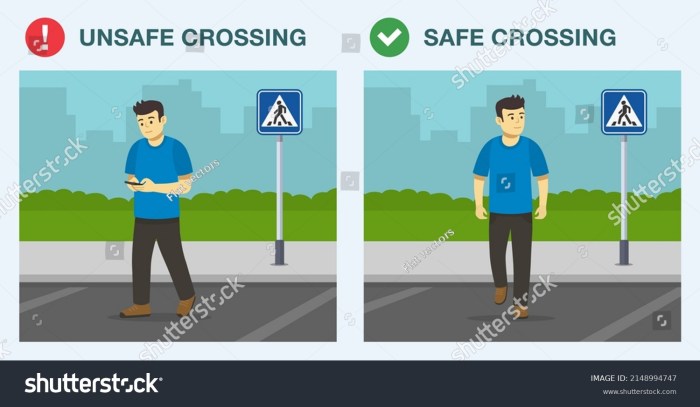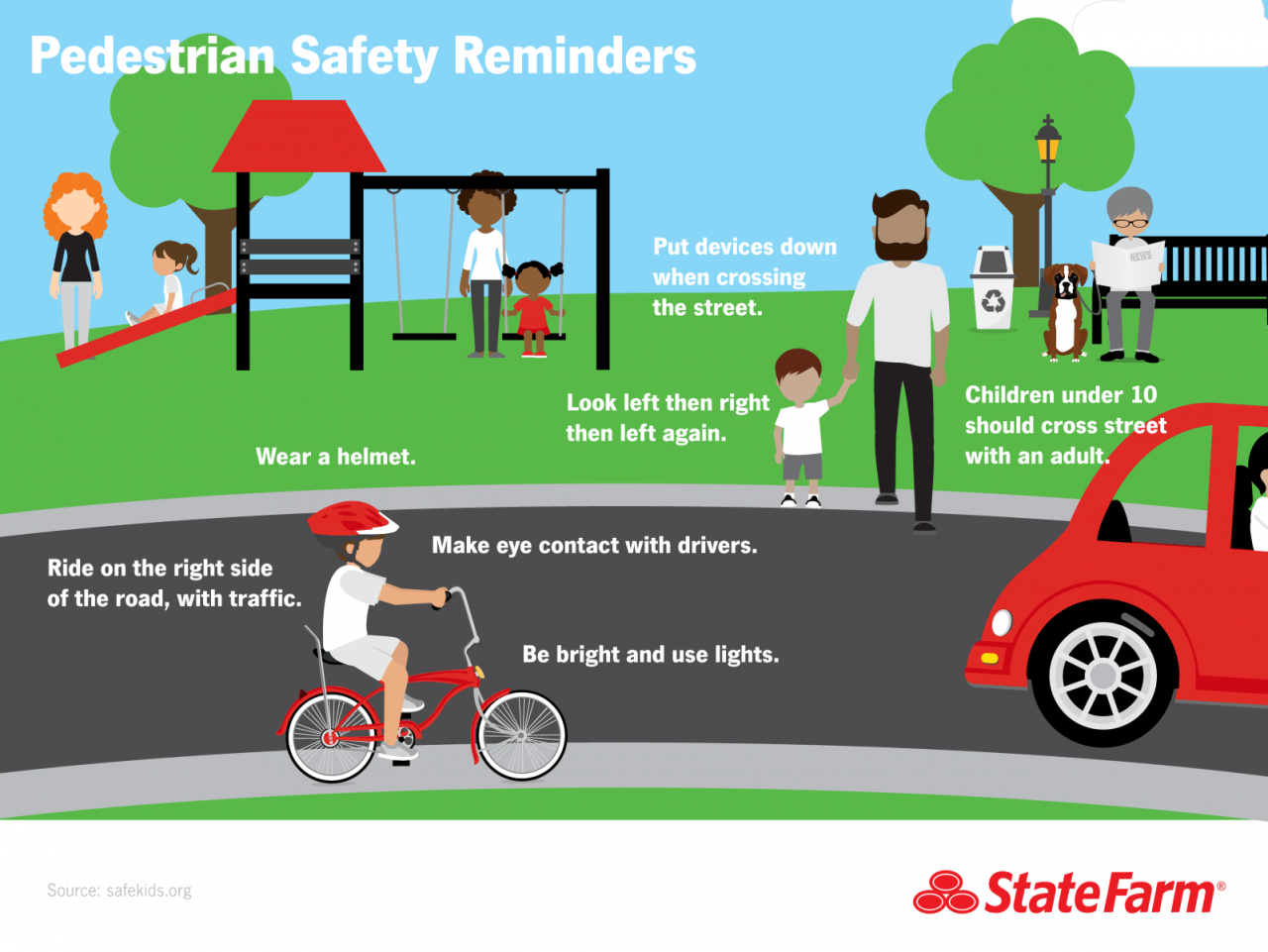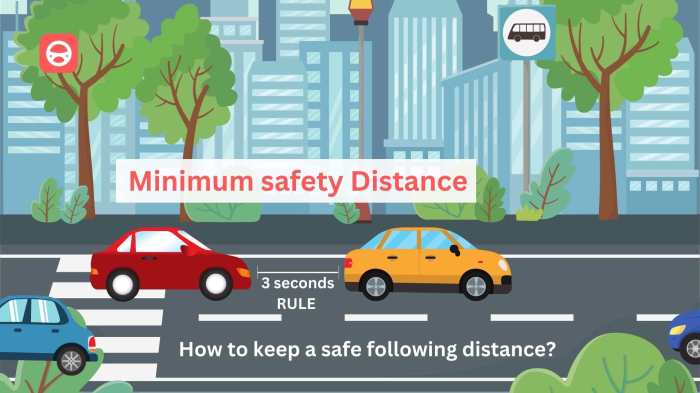How to Stay Safe on the Road delves into the crucial aspects of road safety, providing valuable insights and practical advice to ensure a secure journey for all travelers. From defensive driving techniques to vehicle maintenance tips, this guide covers everything you need to know to stay safe on the road.
Importance of Road Safety

Road safety is a critical aspect that affects all road users, from pedestrians to drivers. It is essential to abide by road safety measures to prevent accidents, injuries, and fatalities that can have devastating consequences.
Statistics on Road Accidents and Fatalities
- According to the World Health Organization, approximately 1.35 million people die each year as a result of road traffic accidents.
- Road traffic injuries are the leading cause of death among young people aged 5-29 years old.
- In the United States, over 38,000 people die in road crashes each year, with an additional 4.4 million sustaining serious injuries.
Real-Life Examples of Consequences
- Inattentive driving leading to a collision resulting in severe injuries or death.
- Not wearing a seatbelt during a crash leading to ejection from the vehicle and fatal injuries.
- Speeding on wet roads causing loss of control and a deadly accident.
Defensive Driving Techniques: How To Stay Safe On The Road

Driving defensively is a crucial skill that can help prevent accidents on the road. By staying alert, anticipating potential hazards, and being prepared to react quickly, drivers can significantly reduce the risk of collisions. Let’s explore some key defensive driving techniques that every driver should practice.
Maintaining a Safe Following Distance
One important defensive driving technique is maintaining a safe following distance from the vehicle in front of you. This gives you more time to react if the car ahead suddenly stops or slows down. A general rule of thumb is to keep at least a three-second gap between you and the vehicle in front.
Avoiding Distractions
Distractions, such as using a phone, eating, or adjusting the radio, can take your attention away from the road and increase the likelihood of an accident. To drive defensively, eliminate distractions by focusing solely on the task of driving.
Scanning the Road Ahead
Another important defensive driving technique is scanning the road ahead for potential hazards. By looking far down the road and being aware of your surroundings, you can anticipate dangers like a sudden stop, a pedestrian crossing, or a merging vehicle. This proactive approach can help you react swiftly and avoid accidents.
Scenario: Avoiding Rear-End Collisions
One common scenario where defensive driving could prevent accidents is avoiding rear-end collisions. For example, if you are maintaining a safe following distance and scanning the road ahead, you are more likely to notice when the car in front suddenly brakes. This awareness gives you time to slow down or change lanes, preventing a rear-end collision.
Scenario: Preventing Intersection Crashes
Defensive driving can also prevent intersection crashes. By approaching intersections cautiously, scanning for red-light runners, and being prepared to yield the right of way if necessary, you can reduce the risk of T-bone collisions or other intersection-related accidents.
Vehicle Maintenance Tips

Regular vehicle maintenance is crucial for road safety as it helps prevent breakdowns, accidents, and ensures the smooth functioning of your vehicle. By performing routine maintenance checks, you can identify and address any potential issues before they escalate into major problems. Here are some essential maintenance tips to keep your vehicle safe on the road:
Brakes
- Check brake pads and rotors for wear and tear regularly.
- Ensure brake fluid is at the correct level and free of any leaks.
- Listen for any unusual noises or vibrations when applying the brakes.
Tires
- Monitor tire pressure and tread depth to ensure optimal grip on the road.
- Inspect tires for cuts, bulges, or uneven wear patterns.
- Rotate tires regularly to promote even wear and extend their lifespan.
Lights
- Check headlights, taillights, brake lights, and turn signals for proper functioning.
- Replace any burnt out bulbs immediately to maintain visibility on the road.
- Keep headlights clean and properly aligned for maximum illumination.
Fluid Levels
- Regularly check engine oil, transmission fluid, coolant, and windshield washer fluid levels.
- Top up fluids as needed and address any leaks promptly.
- Follow the manufacturer’s recommendations for fluid changes and replacements.
By following this checklist and staying proactive about your vehicle maintenance, you can ensure that your vehicle is safe, reliable, and ready for the road at all times.
Dealing with Adverse Weather Conditions

Adverse weather conditions can significantly impact road safety, making driving more challenging and hazardous. It’s essential to be prepared and know how to navigate through rain, snow, fog, or ice to ensure your safety and the safety of others on the road.
Driving in Rain
Driving in rain can reduce visibility and create slippery road surfaces. To stay safe:
- Ensure your windshield wipers are in good condition and headlights are on for better visibility.
- Keep a safe distance from other vehicles to allow for longer braking distances.
- Avoid sudden maneuvers or speeding to prevent hydroplaning.
Driving in Snow
Snow can cover road markings and create icy patches, increasing the risk of accidents. Tips for driving in snow:
- Drive at a slower speed and use snow tires or tire chains for better traction.
- Brake gently to avoid skidding and maintain a safe distance from other vehicles.
- Clear snow from your vehicle before driving to ensure visibility.
Driving in Fog, How to Stay Safe on the Road
Fog can severely limit visibility, making it challenging to see other vehicles or obstacles on the road. Safety tips for driving in fog:
- Use fog lights and low beams to improve visibility.
- Reduce speed and use windshield defoggers to keep the windshield clear.
- Listen for traffic sounds and be prepared to stop if visibility becomes too poor.
Driving on Ice
Driving on ice is extremely dangerous as it reduces traction and control over the vehicle. Tips for driving on ice:
- Drive at a slower speed and avoid sudden acceleration or braking.
- Use chains or studded tires for better grip on icy surfaces.
- Steer gently and in the direction you want to go if you start to slide.
End of Discussion

In conclusion, prioritizing road safety through defensive driving, regular vehicle maintenance, and preparedness for adverse weather conditions is key to preventing accidents and ensuring a smooth travel experience. Stay informed, stay alert, and stay safe on the road.